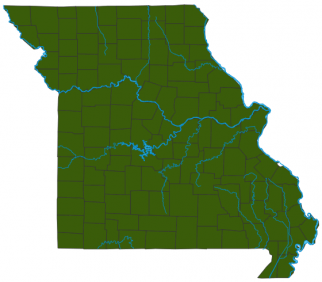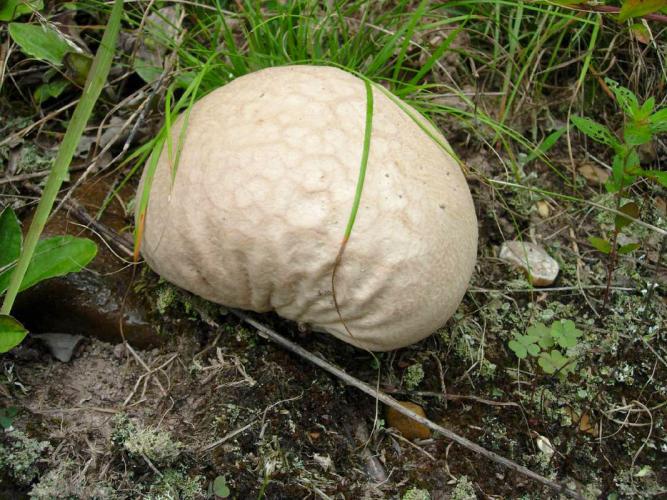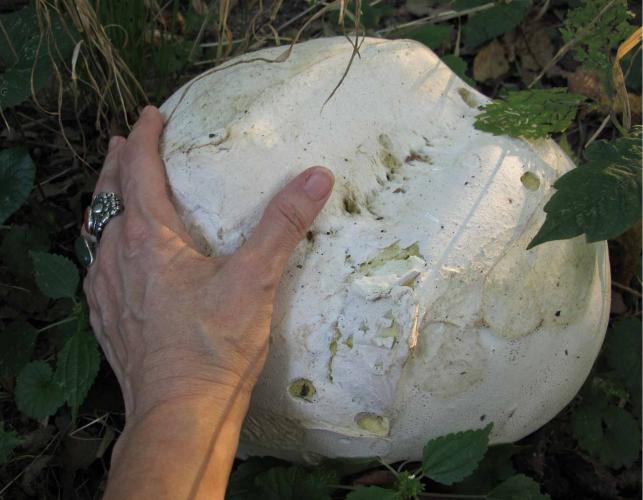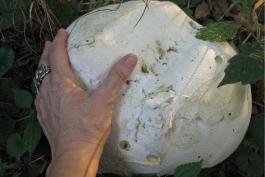
Huge, white, smooth ball; completely white interior becomes yellowish green with age. Grows in open pastures, woods, and lawns. May–October. Fruiting body round; outside white; inside pure white when fresh and young, yellowish green with age; outside texture smooth, soft, cracking irregularly; inside texture marshmallow-like; there is a rootlike attachment at the base. Spore print greenish brown. Spores magnified are round. A giant puffball can be very large — as big as a soccer ball or even much larger.
Lookalikes: Some other types of white mushrooms, including the deadly destroying angel (Amanita bisporigera), have stages in which they could be mistaken for a puffball. Make sure you cut through any puffball from top to bottom to confirm that it is pure white inside, like a marshmallow, with no sign of a cap or stem.
Fruiting body width: 8–20 inches; height: 8–20 inches.

Statewide.
Habitat and Conservation
Grows singly or in groups of up to many in open pastures, woods, and lawns.
Status
Considered a choice edible, with caution. Cut open each puffball, from top to bottom, to make sure of your identification; it should be entirely smooth and plain throughout, with no sign of any developing cap or stem. Once you're sure it's a puffball, go ahead and make some "puffball parmesan," substituting sliced giant puffball for eggplant. Peel off the tough outer skin before cooking, since it can be hard to digest.
Life Cycle
Giant puffballs can occasionally be huge, weighing 25 pounds or more. One mycologist estimated the number of spores in a 15-inch puffball to be as many as seven trillion! The ball is actually a spore sac. When immature, the inside is solid, but as it matures it changes into powdery spores. The spores are released when the sac breaks from weathering or damage.
Human Connections
Giant puffballs are often found on lawns, so be sure the area is free of lawn-treatment chemicals before collecting for cooking. It is a good idea to sample only a small amount at first, since some people are simply allergic to certain chemicals in certain fungi. Make sure they are cooked, too.
Ecosystem Connections
This is one of the many fungus species that live on decaying organic materials. It and other such saprobic fungi play an incredibly important role in breaking down the tough materials living things are made of and returning those nutrients to the soil.




Mushrooms are a lot like plants, but they lack chlorophyll and have to take nutrients from other materials. Mushrooms are neither plants nor animals. They are in a different kingdom — the fungi. Fungi include the familiar mushroom-forming species, plus the yeasts, molds, smuts, and rusts.
Always be cautious when eating edible mushrooms. Be absolutely sure of the ID, and only eat a small amount the first time you try it to avoid a reaction..





















